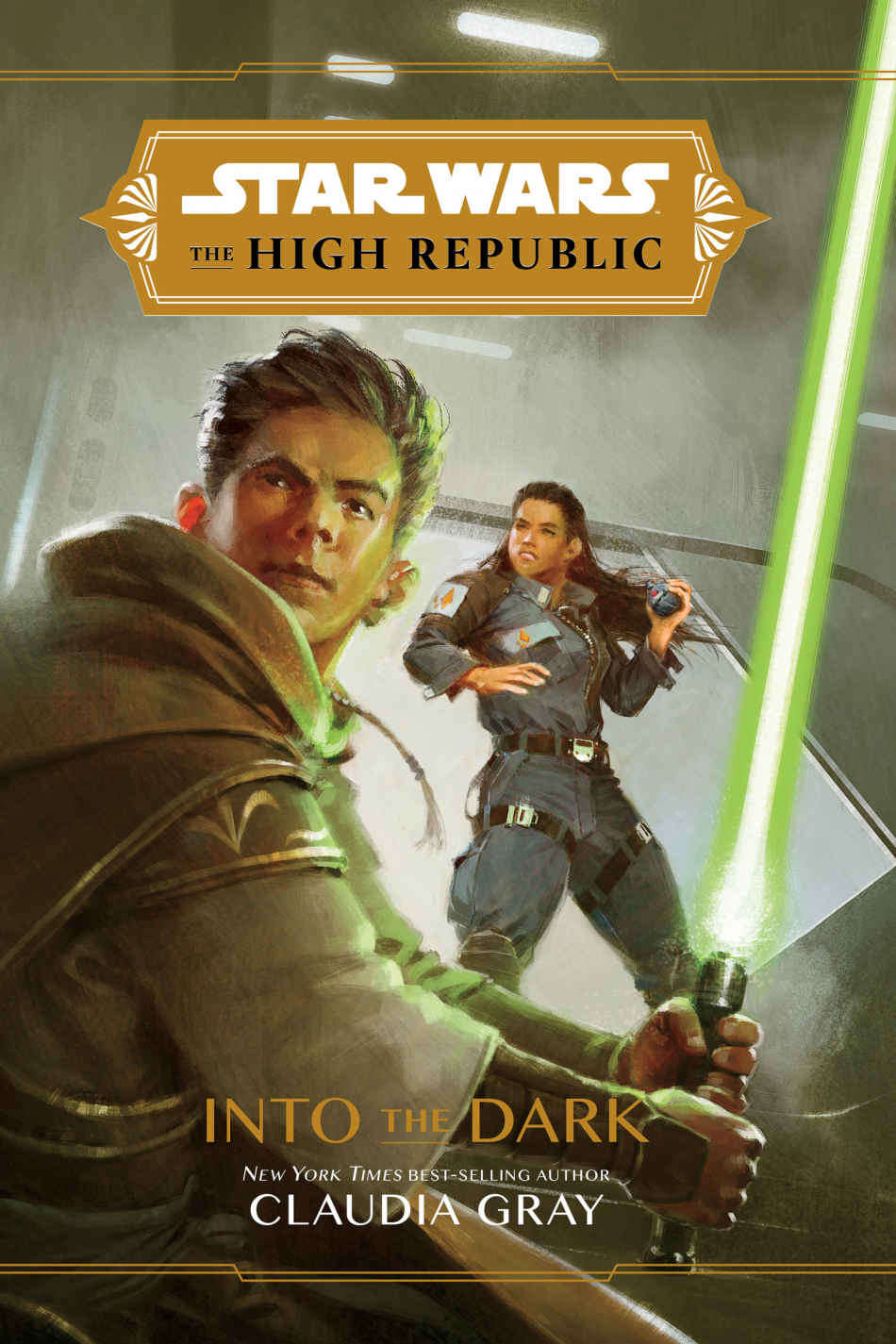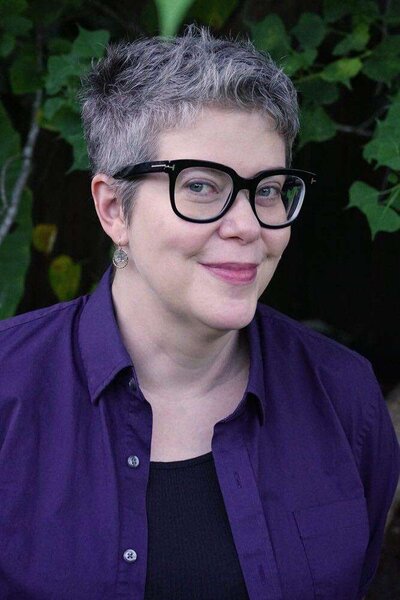Create a free profile to get unlimited access to exclusive videos, sweepstakes, and more!
Author Claudia Gray on Star Wars: The High Republic: Into the Dark's sentient rock and crafting new canon

The launch of the Star Wars: The High Republic initiative hit January harder than a Gungan hits a pit droid's nose. Charles Soule's Light of the Jedi kicked it all off, along with A Test of Courage by Justina Ireland, and a new High Republic comic series written by Cavan Scott. They are three of the main Star Wars “Project Luminous" authors, along with Daniel José Older (Star Wars: Last Shot) and Claudia Gray.
Gray's turn at the High Republic helm launched this week. The prolific author (Star Wars: Lost Stars, Bloodline, Leia: Princess of Alderaan, Master & Apprentice) enters the fray with her new book, Star Wars: The High Republic: Into the Dark, to fill out even more of the era. As with Light of the Jedi, the new book uses the Legacy Run disaster as a catalyst, though it tells a more intimate story. For the uninitiated, the Legacy Run is a vessel that is mysteriously destroyed while in hyperspace — the fallout causes damage on a massive scale, and lightspeed travel is greatly limited for a time. Gray's book focuses on Jedi Padawan (and reluctant adventurer) Reath Silas, who gets caught up in the aftermath alongside two other Jedi, two spirited pilots, and a sentient rock (a Vintian) named Geode. Yes, really.
SYFY WIRE caught up with Gray to discuss Into the Dark, how it came to be, how she works within the High Republic collective, and the importance of the right rock.
***WARNING: From this point on, there will be spoilers for the books Into the Dark as well as Light of the Jedi. Mostly the latter, as the former is brand new and we're not gonna go spilling secrets out of school. That's a popular phrase.***
The Legacy Run disaster is at the heart of this entire initiative right now. Was that something that you all came up with as a team?
Yeah, I think so, yeah. We needed a huge inciting incident because it is this time of greater peace, greater prosperity, the absolute height of the Republic. There aren't these huge, massive wars that we're used to seeing in Star Wars going on. Ben Kenobi told us that in 1977, and as we know, he would never lie. But that doesn't mean that there was no conflict, that doesn't mean that there weren't problems, that doesn't mean that the Jedi didn't have anything to guard against. So, we needed that inciting incident to set that up and go, "Here's the kind of thing that complicated even those days."
How then did you end up with the particular branch of the story told in Into the Dark?
Sometimes after you've woven it all together, it's hard to remember where this strand particularly began. I knew that I wanted something that would be further away from it, just so Charles would have maximum freedom to move in a narrative way, and also there's more to set up. There were more things that needed introducing that couldn't be a part of that very first book, that very, very first narrative strain, there are other things that you need to know about. It let us take a slightly different look at a couple of things.
For me, the fun of writing Star Wars, or really even just watching Star Wars is asking, "What would it be like to be there?" And I thought it would be interesting to experience that great disaster from the point of view of some people who aren't right in the thick of it... so you can imagine this is happening all over the galaxy, but here's specifically what's happening to this group of people who've been marooned.
You talk about Jedi Master Jora Malli early on in this book. She's the master of protagonist Reath Silas, and you make us love her... though we already that know she's dead by the end of Light of the Jedi.
If I'm remembering correctly, and again, this is also collaborative but I may be wrong, I think I had the idea that Reath's master should die in this first book because it's this huge transition for him, and the idea of her then kind married to this incident in Charles' novel and he's like, "Great, that's who can be here, that's who I need to be there to have this happen with." So, it sort of works that way, I guess that gives me the major knife twisting role, but Charles is not innocent, that's what I'm saying.
There's blood on his hands.
I'm turning witness on Charles, that's a lighter sentence.
Since we're naming names, who is responsible for having Yarael Poof on the Jedi Council in this era?
Who does not love Yarael Poof? I mean, what black and shriveled heart does not have room for Yarael Poof in it?
Was the passing back and forth of batons the major difference between writing this book and a book such as Lost Stars or Bloodline?
The easiest thing about doing this is also the hardest thing about doing this, which is that you don't have that full network of canon, which on the one hand gives us a lot more freedom — we know nobody else is talking about it in a book or a movie or a comic or a TV show, what may happen next with the Nihil. That's up to us, we get to do that and so you're very free in that way.
On the other hand, sometimes, as in Lost Stars, that framework could be a little bit of something to bounce off of. One of the great things about writing Star Wars is I can say, "What did that ship look like?" And they're like, "Oh, here are some blueprints of the ship." Here we have to go, "Oh, we really have to figure out what the ship is like." So, you get to do that and that's super fun and I liked that element of it. You're losing both some of the constraints and some of the support framework, but that's the adventure.
One of the million and a half Star Wars shows just announced was The Acolyte, which will take place toward the end of the High Republic. As one of the guardians of High Republic lore, what input might you have on the story of that show?
I would say that is a question that I myself have. I don't know whether they're going to rely on us a lot, or rely on us on a little, or rely on us not at all. I think that's far enough in the future that it kind of remains to be seen.
There's something about your writing of Padawans... you did it in Master & Apprentice with Obi-Wan and you do it again here, we get this feeling that they all seem to have imposter syndrome.
I think there's something of that. In some ways, this ties into Yoda in The Last Jedi: the greatest teacher is failure. The whole process is, "What are your biases? What are your shortcomings?" You're learning that as well as learning your talents and I think it's a path that really requires a lot of insight into yourself.
I think Reath is definitely is like, "I'm going to be a great Jedi Knight. I'm going to be the best Jedi librarian you've ever seen." But at the same time, he's sort of keenly aware of what he's not good at... I like the bit in the beginning where Jora Malli — she's aware that one of his weaknesses is really one of his strengths. The fact that he's not as hugely strong in the force as a lot of Jedi are and she is like, "That means he's not going to be shaken as easily when things go wrong or when things are hard."
Good thing that they never fall in love. How many of their issues do you think would be resolved if they changed those rules a little bit?
So many. So, so many, don't you think?
Absolutely. We were going to ask if they're going to make a Geode action figure, but we guess that we could just go out and get a rock?
Could there be a great Geode Funko Pop? I think so, or you could get a rock. But this was hilarious. I guess it was like early last month maybe, Mike [Siglain] sent me art, the art team had done art of Geode and he's like, "Yeah, we actually drew Geode, this is OK, right?" I was like, "Actually, no." Like he had to go through three drafts to get the right rock, the right rock because he's cute.
It's got to be the right rock.
Well yeah, it kind of does. I mean, we did describe him in the book, so you know what kind of shade he is and roughly what shape, so we just had to... I think one of the things is he had really jagged edges and I was like, "No, no, no, Geode's smooth, man. He's been through the water, he's smooth."
We have to bring this up. In the acknowledgments in Queen's Peril, your colleague E. K. Johnston thanked her fellow Star Wars writers, and then wrote, "I didn't break Panaka, Claudia did that."
Oh yeah, yeah, totally. Oh, I'm totally guilty of that [in Leia: Princess of Alderaan], which is why you should believe me when I tell you, you should also convict Charles... not on that, just on other crimes.
Star Wars: The High Republic: Into the Dark is on shelves right now. We are all the Republic. We are all Geode.




























